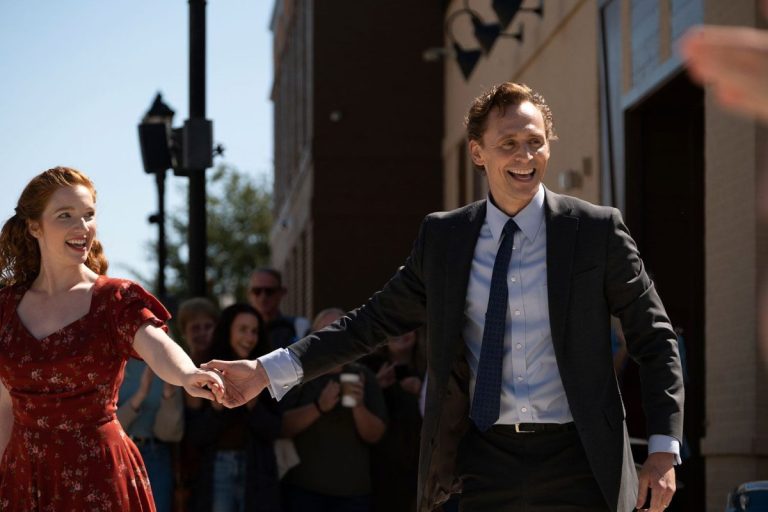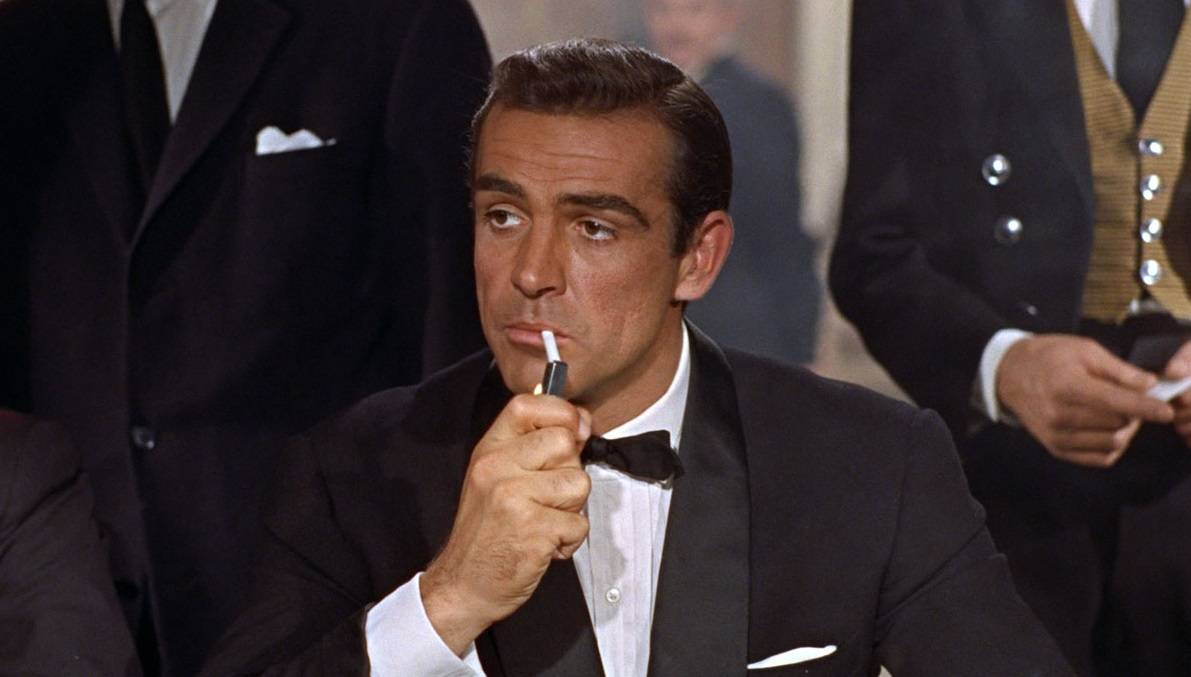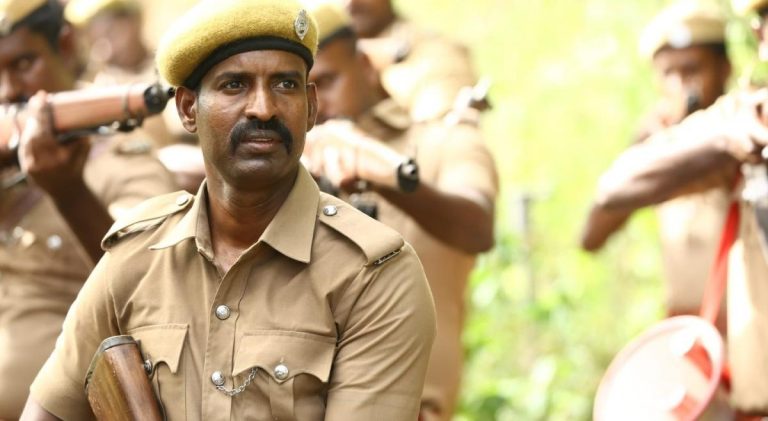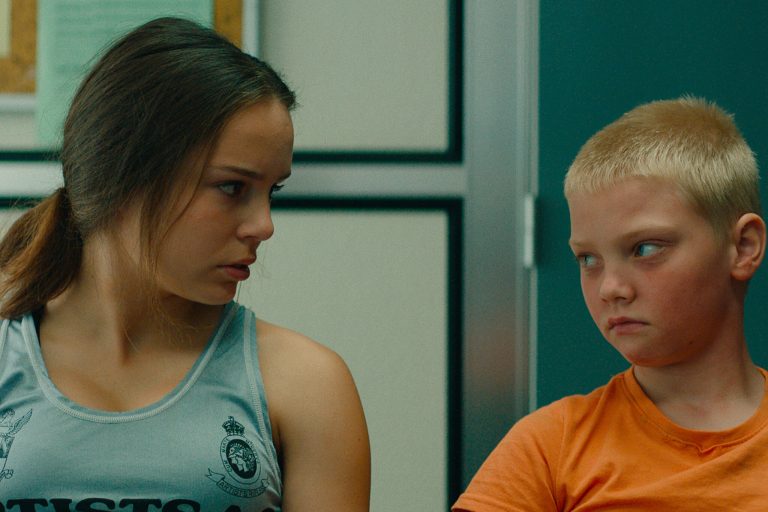Kathryn Bigelow’s “A House of Dynamite” (2025) starts with an explosion and an onscreen warning. It’s a real-time thriller steeped in detail and Department of Defense jargon that offers audiences a play-by-play look at how the US government would respond to a nuclear attack minute-by-minute. In this way, it offers a perspective that’s new in its intricacy and surprisingly hokey in its delivery.
This is Bigelow’s first film since 2017’s underrated “Detroit,” and her affinity for action and tension is on full display even as the film waffles to its finish. “A House of Dynamite” is shot through with urgency and a propulsive sense of energy. The fear here is nuclear war, but the real enemy is uncertainty. Someone has launched a warhead that somehow managed to evade the initial sensors. Its origin is unclear, so any act of retaliation would be a shot in the dark, one that would set off a nuclear war and likely the end of the world as we know it.
Much of “A House of Dynamite” is composed of the same events from different perspectives as we go up the chain of command. It’s essentially the same 18 minutes played from different perspectives, with implications in one segment only becoming clear in the next one. At first, we peek into the inner lives of the officials and their loved ones as they march toward what the audience already knows is a fateful day.
The beginning features a glut of competency porn and Sorkinesque walk-and-talk energy that falls away into anxiety and, eventually, dread. The second segment weaves in some very interesting concerns about nuclear deterrence and the military industrial complex, but the final segment fails to tie them together in a way that’s satisfying or meaningful.

“A House of Dynamite” might be the most in-depth nuclear panic movie yet, but it ultimately offers less than most films in the genre. Bigelow and scripter Noah Oppenheim rely on structure, wonkiness, and the urgency of the premise to cover up some corny dialogue (including one of the most ungraceful title drops in recent film history) and a lack of conviction in its premise. The gimmick effectively becomes the star as various talking heads appearing on video calls throw out concerns and competing opinions.
Also Read: 15 Great Psychological Crime Thrillers with Shocking Plot Twists
In a big cast, there’s little room for anyone to stand out, but some make bigger impressions than others. Gabriel Basso, as a National Security official, gets one of the showiest parts, and Idris Elba is fine as the exhausted, harried, all-too-human president. More memorable are Tracy Letts’ hawkish general and Jared Harris as the Secretary of Defense, who provides the film with its most memorable moment and its most memorable line.
However, beyond what the individual actors imbue in limited roles, the characters are sketches of archetypes. The camera lingers on its actors as they learn of the news and immediately look to their loved ones, and there’s something particularly fascinating about the cynicism Bigelow and Oppenheim put on offer as multiple officials break protocol to contact their loved ones.
The fact that “A House of Dynamite” never gets ahead of its audience starts off as a feature but ends up as a bug. The film repeats the same events from different perspectives, adding more context and new flourishes, but it fails to offer anything more concrete than its central dilemma. It asks important, fascinating questions that it’s not particularly interested in answering. For the filmmakers, the chaos is enough, but the scenario it posits is so specific – albeit very possible – that its reluctance to move the plot beyond its initial premise is more frustrating than haunting.

This is not a subtle film. Its motley crew of bemused officials, bureaucrats, and defense types wonder aloud, argue over retaliation, cite statistics into the camera, and hurriedly get family on the line even as the seconds count down.
A House of Dynamite” has been positioned as the third entry in Bigelow’s unofficial ‘War on Terror’ trilogy—following her collaborations with Mark Boal on the Oscar-winning “The Hurt Locker” and the contentious “Zero Dark Thirty.” Yet, rather than extending that lineage, it feels more indebted to the aesthetics of screenlife experiments and single-take thrillers. The film collapses into its own twin gimmicks, cloaked in the gravity of its subject matter and buoyed only by the unflinching resolve of its characters struggling to stay composed.
What proves most striking—and, given Bigelow’s hand, most disheartening—is the film’s uneasy, off-kilter restraint. It effectively recreates how such an attack would look on screens, but its focus is too myopic to be affecting. No amount of situation room shots or radar screens can compensate for the film’s lack of resolve, and Bigelow’s firm hand betrays the fact that she and Oppenheim are ultimately less interested in telling a story than in asking questions.
For a while, its probing nature and eye for protocol offer something new, but unlike films that covered similar ground – “Dr. Strangelove,” “Fail Safe,” “Threads” – it fails to offer an overarching vision even as it takes us through the echelons of power. There’s something bitterly ironic about the most powerful nation on earth being unable to protect itself, and, for much of its screentime, Bigelow and co. put the audience into a position where we’re powerless to do anything but watch the unthinkable unfold, but it ends as more of a trick. “A House of Dynamite” has been described as urgent, tense, and important, but, ultimately, it’s a movie without a payload.






